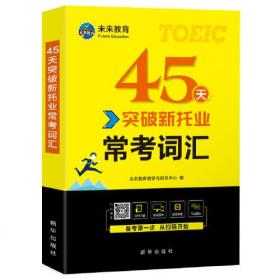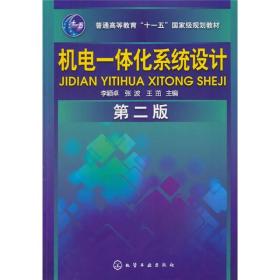
国际结算(双语版)/十二五高等院校应用型特色规划教材
¥ 7.57 1.9折 ¥ 39 九五品
仅1件
山东泰安
认证卖家担保交易快速发货售后保障
作者王瑛、杨碧琴、张玉荣 著
出版社清华大学出版社
出版时间2016-07
版次1
装帧平装
上书时间2024-12-19
- 最新上架
商品详情
- 品相描述:九五品
图书标准信息
- 作者 王瑛、杨碧琴、张玉荣 著
- 出版社 清华大学出版社
- 出版时间 2016-07
- 版次 1
- ISBN 9787302439691
- 定价 39.00元
- 装帧 平装
- 开本 16开
- 纸张 胶版纸
- 页数 293页
- 字数 445千字
- 丛书 “十二五”高等院校应用型特色规划教材
- 【内容简介】
-
国际结算是研究不同国家当事人之间因各种往来而发生的债权债务经由银行来办理清算的一门实用学科。该课程旨在使学生了解和掌握从事涉外经济以及金融工作所必需的国际间债权债务结算知识。本书根据国际贸易与结算相关新惯例、规则,借鉴国外原版教材,立足于教学内容本土化,是一本能够反映当前国际结算领域发展前沿和满足本科教学实际需要的《国际结算》课程双语教材。
本书通过对国际结算的基本理论、基本操作和国际惯例的讲解,使学生对国际结算知识有系统全面的了解和认识,并能较熟练地进行各种实际业务操作。本书以银行为中心的结算体系为主线,以国际结算的主要研究对象(国际结算的主要工具、方法、相关单据及具体的单据业务)为内容,同时增加了CDCS考试介绍与复习指导。
本书适用于高等院校金融学、国际经济与贸易及其他经管类专业的专业课教学,也可作为涉外企事业单位相关工作从业人员的继续教育参考用书。
- 【目录】
-
Chapter 1Introduction
1.1Basic Concepts and Contents of International Settlement
1.1.1Basic Concepts of International Settlement
1.1.2Types of International Settlement
1.1.3Basic Contents of International Settlement
1.2Evolution of International Settlement
1.2.1From Cash Settlement to Noncash Settlement
1.2.2From Direct Payment to Payment Effected through
a Financial Intermediary
1.2.3From Payments under Simple Price Terms to Payments
under More Complex Price Terms
1.2.4New Tendency: Settlement through the Internet
1.3The International Chamber of Commerce (ICC)
1.4International Payment Systems
1.4.1Brief Introduction
1.4.2International Clearing Systems
Chapter 2Instruments of International Settlement
2.1An Overview of Negotiable Instruments
2.1.1Characteristics of a Negotiable Instrument
2.1.2Functions of Negotiable Instruments
2.2Bill of Exchange(汇票)
2.2.1Definition of a Bill of Exchange
2.2.2Essentials to a Bill of Exchange
2.2.3Parties to a Bill of Exchange
2.2.4Acts of Bills of Exchange
2.2.5Classification of Bill of Exchange
2.2.6Advantages of a Bill of Exchange
2.3Promissory Note(本票)
2.3.1Definition of a Promissory Note
2.3.2Characteristics of a Promissory Note
2.3.3Essentials to a Promissory Note
2.3.4Classification of Promissory Note
2.3.5Parties to a Promissory Note
2.3.6Difference between a Promissory Note and a Bill of Exchange
2.4Cheque(支票)
2.4.1Definition of a Cheque
2.4.2Essentials to a Cheque
2.4.3Features of a Cheque
2.4.4Parties to a Cheque
2.4.5Classification of Cheque
2.4.6Difference between a Cheque and a Bill of Exchange
Chapter 3Payment MethodⅠ: Remittance
3.1Outline of Remittance
3.1.1Definition of Remittance
3.1.2Parties to a Remittance
3.1.3Types of Remittance
3.2Procedure for Remittance
3.2.1Procedure for T/T
3.2.2Procedure for M/T
3.3.3Procedure for D/D
3.3.4Reimbursement Methods
3.3.5Cancellation of the Remittance
3.3Comparison of the T/T,M/T and D/D
3.4Advantages and Disadvantages of Remittance
3.4.1Advantages of Remittance
3.4.2Disadvantages of Remittance
3.5Function of Remittance in International Trade
3.5.1Open Account
3.5.2Consignment
3.5.3Payment in Advance
Chapter 4Payment Method Ⅱ: Collection
4.1An Overview of Collection
4.1.1Definition of Collection
4.1.2The Nature and Application of a Collection
4.1.2Parties to Collection
4.1.3Types of Collection
4.2Documentary Collection Practice
4.2.1Procedure of Documentary Collection
4.2.2Collection Application Form and Order
4.2.3Uniform Rules for Collection
4.3Risk Protection and Financing under Collection
4.3.1Risks Involved
4.3.2Notes,Tips,and Cautions
4.3.3Financing under the Collection
Chapter 5Payment Method Ⅲ: L/C
5.1An Overview of L/C
5.1.1Definition of L/C
5.1.2Characteristics of L/C
5.1.3International Rules and Customs for L/C
5.1.4Contents and Form of L/C
5.1.5Parties Involved in an L/C
5.2Types of L/C
5.2.1According to whether Accompanied by Commercial Documents
5.2.2According to whether Confirmed by Another Bank
5.2.3According to the Mode of Availability
5.2.4Straight L/C
5.2.5Anticipatory L/C
5.2.6Transferable L/C
5.2.7BacktoBack L/C
5.2.8Revolving L/C
5.2.9Reciprocal L/C
5.2.10Travelers L/C
5.3Procedures of Documentary L/C
5.3.1Issuance
5.3.2Amendment
5.3.3Utilization and Settlement
5.4Risks under L/C and Protection
5.5Financing under L/C
5.5.1Financing Provided to the Exporter
5.5.2Financing Provided to the Importer
5.6Introduction to UCP600
Chapter 6Other Methods of International Settlement
6.1Banks Letter of Guarantee(L/G)
6.1.1Definition of L/G
6.1.2Parties to An L/G
6.1.3Types of L/G
6.1.4Procedure of L/G
6.1.5Contents of L/G
6.1.6Differences between L/G and L/C
6.2Standby L/C
6.2.1Definition of Standby L/C
6.2.2Characteristics and Types of Standby L/C
6.2.3Differences between Standby L/C and L/ C
6.2.4Differences between Standby L/C and L/ G
6.3International Factoring
6.3.1Definition of International Factoring
6.3.2Parties to International Factoring
6.3.3Types of International Factoring
6.3.4Procedures of International Factoring
6.3.5Application of International Factoring
6.3.6Advantages of International Factoring
6.3.7Compassion between International Factoring and Traditional
Payment Method
6.4Forfaiting
6.4.1Definition of Forfaiting
6.4.2Characteristics of Forfaiting
6.4.3Parties to Forfaiting
6.4.4Procedure of Forfaiting
6.4.5Advantages and Disadvantages of Forfaiting
6.4.6Difference between Factoring and Forfaiting
Chapter 7Documents Used in International Settlement
7.1Documents
7.2Invoice
7.2.1Commercial Invoice
7.2.2Other Invoice
7.3Transport Documents
7.3.1Marine Bill of Lading
7.3.2Sea Waybill
7.3.3Airway Bill
7.3.4Railway Bill
7.4Insurance Documents
7.4.1Insurance Policy
7.4.2Insurance Certificate
7.5Other Documents
7.5.1Packing List
7.5.2Certificate of Origin
7.5.3Inspection Certificate
7.5.4Export License
7.6Documents Examination and Disposal of Discrepancies
7.6.1Documents Examination
7.6.2Documents Checklists
7.6.3Disposal of Discrepancies
Chapter 8Nontrade Settlement
8.1Nontrade Settlement
8.2Overseas Chinese Remittance
8.3Travelers Cheque
8.3.1Definition of Travelers Cheque
8.3.2Parties to a Travelers Cheque
8.3.3Procedures of Travelers Cheque Transaction
8.3.4Advantages of the Travelers Cheque
8.4Credit Card
8.4.1Definition of Credit Card
8.4.2Parties to a Credit Card
8.4.3Procedure of Credit Card
8.4.4Function of Credit Card
附录ⅠCDCS考试
跟单信用证专家(Certified Documentary Credit Specialist,CDCS)考试
模拟题
附录ⅡUCP600中文版
参考文献
点击展开
点击收起
— 没有更多了 —












以下为对购买帮助不大的评价